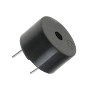BATTERIES
 |
| Batteries Image |
1. A battery is a group of cells that generate electric energy from their internal chemical reaction.
2. The function of a battery is to provide a source of steady dc voltage of a fixed polarity.
There are two types of cells
A) Primary cells
1. These cells can transform the chemical energy into electrical energy.
2. They provide relatively less amount of power.
3. The size of a primary cell is small and it is available at a low cost.
4. But any primary cell cannot be recharged. It becomes useless when discharged.
For example lithium cell, carbon-zinc cell, mercury cell, silver-oxide cell etc.
B) Secondary cells (storage cells)
1. These cells can convert chemical energy into electric energy (discharging) and electric energy into chemical energy (charging).
2. They provide relatively large amount of power.
3. These are heavier and expensive than primary cells. But they can be used again and again by recharging them, when they are discharged.
For example: nickel-cadmium cell, lead-acid cell, nickel-iron (Edison) cell etc.
a) Lithium cell
1. This is new type of primary cell.
2. Its advantages are high output voltage, long shelf life, low weight and small volume.
3. There are two types of lithium cells
i) Lithium-sulphur dioxide (LiS02) and ii) lithium-thionyl chloride type. Output of first type is 2.9 V and 3.7 V for second type. Lithium in the form of small round discs.
4. The shelf life of lithium cells is 10 years or more.
b) Nickel-Cadmium (NICd) cell
1. This is a secondary cell. This cell is available in both sealed and nonsealed designs.
2. Nominal output voltage is 1.25 V per cell.
3. These cells can be used in portable power tools, alarm systems and portable radio etc.
C) Solar cells
1. This cell works on the principle of photovoltaic effect.
2. A potential difference is produced across the boundary of two substances like cadmium sulphide and gallium arsenide when they are in close contact and their junction is exposed to light radiation.
3. Silicon, with an output 0.5 V per cell, is widely used now.
4. In practice, the cells are assembled into large solar array for the required power.
5. In most applications, the solar cells are used in combination with a lead acid cell.
6. When there is sunlight, the solar cells charge the battery, as well as supply power to the load.
7. When there is no light, the battery supplies the required power.












0 Comments